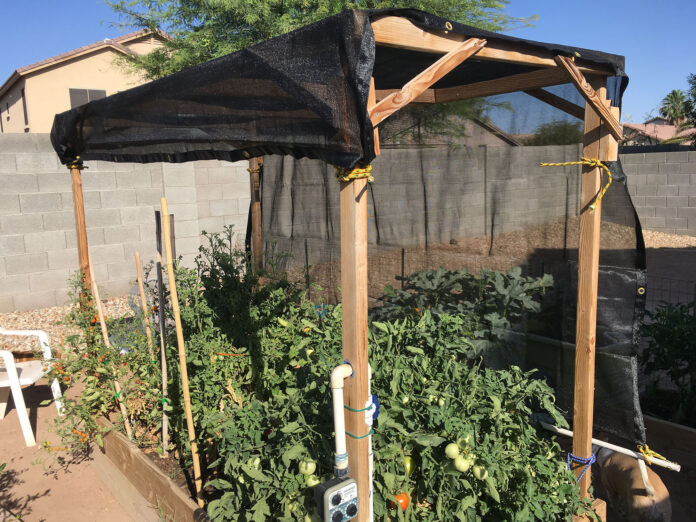
By Ron Bernier

The good news in the low desert of Arizona is that there are two growing seasons. That means you can grow a wide variety of vegetables during the course of the year. The bad news is the growing seasons are short, and we have to plan to get the most production from our home gardens in this short amount of time.
We are currently in the warm growing season. The season ends when the temperatures get too high for plants to produce viable pollen and the pollinators (mostly bees) are less active.
Warm season plants are typically those that have edible fruits – corn, cucumber, eggplant, tomatoes, melons, squash, peppers, pumpkins, jicama and okra. For a detailed vegetable planting schedule for Maricopa, visit the Master Gardeners’ page on the University of Arizona web site.
You can make the warm growing season longer by following these tips: [quote_box_right]TIPS
It is not early to start thinking about what you want to plant for the cool season. Cool season plants typically have edible leaves, stems and roots. Examples include beets, cabbage, broccoli, asparagus, carrots, lettuce, mustard, parsley, radish, turnips and peas. The cool season runs from August, when temperatures start to fall, and runs until the first frost. You can start planting seeds in August while the ground is still warm enough to encourage germination. Transplants usually go in starting in September. You will be able to harvest until the first frost. Use the Vegetable Planting Schedule mentioned above to help select plants and timing for your own garden.[/quote_box_right]
- When possible, plant varieties that can be started from transplants. Plants that are started indoors from seed or in a greenhouse can give you a great head start on days to harvest.
- Monitor your plants daily for heat stress. Plants show stress by leaves withering and stunted growth. Use a moisture meter daily to ensure your plants have the right amount of water as the days grow longer and hotter. Adjust watering durations as required.
- Make sure your plants have sufficient nutrients available. Many vegetable plants are heavy feeders and will require additional applications of fertilizer during the growing season. Follow the recommendations on the package when applying fertilizer. Remember that as you increase the amount of water required in the hot months, you will also have to shorten the time between feedings as water will leach nutrients from the planting bed.
- Use shade cloth to protect plants from overheating and sunburn. Install shade cloth to protect plants from both mid- and late-day sun (west side of garden). Shade cloth comes in varying degrees of sunlight filtering. Use cloth that offers 60-70 percent protection. Don’t completely block the sun as this will really slow down growth and production.
Ron Bernier is a Master Gardener and a resident of Maricopa.
Extension.Arizona.edu/master-gardeners
This column appears in the July issue of InMaricopa












![Alleged car thief released without charges Phoenix police stop a stolen vehicle on April 20, 2024. [Facebook]](https://www.inmaricopa.com/wp-content/uploads/2024/04/IMG_5040-218x150.jpg)

![3 things to know about the new city budget Vice Mayor Amber Liermann and Councilmember Eric Goettl review parts of the city's 2024 operational budget with Mayor Nancy Smith on April 24, 2024. [Monica D. Spencer]](https://www.inmaricopa.com/wp-content/uploads/2024/04/spencer-042424-preliminary-budget-meeting-web-100x70.jpg)


